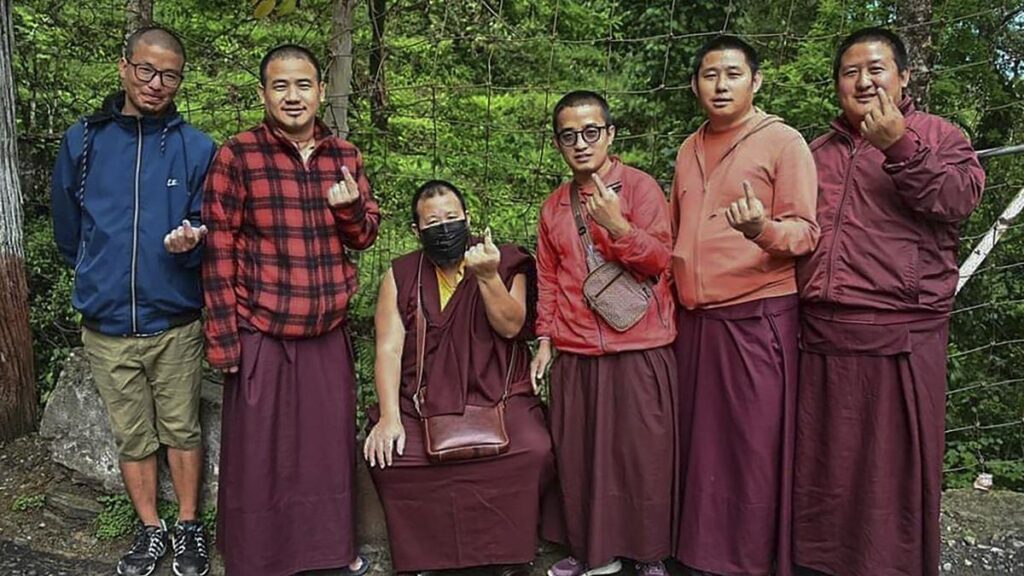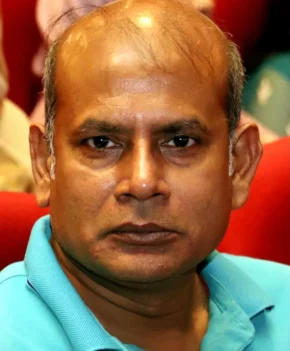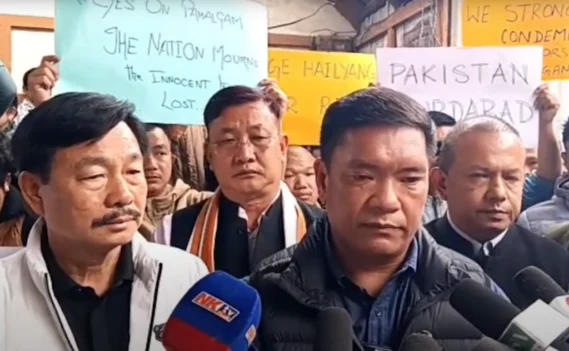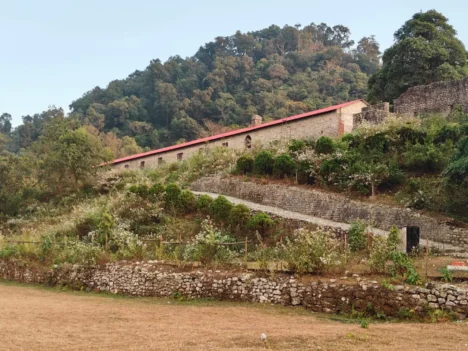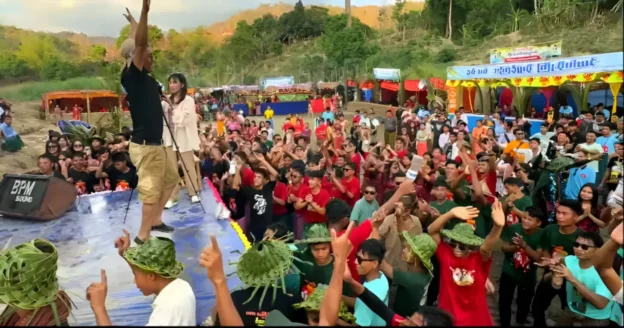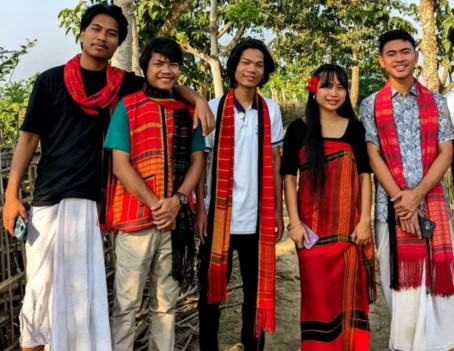India’s Lok Sabha Elections in 2024 marked a crucial turning point in the political landscape of the nation, with particular significance observed in the states of North East India. Comprising eight states, namely Assam, Arunachal Pradesh, Manipur, Meghalaya, Mizoram, Nagaland, Tripura, and Sikkim, the region witnessed a confluence of diverse political narratives, reflecting the region’s unique socio-cultural fabric and intricate geopolitical dynamics. With its focus on environmental conservation and tribal traditions, Meghalaya saw active participation and initiatives like ‘green elections,’ reflecting the state’s unique concerns. Meanwhile, Manipur’s elections were overshadowed by ongoing ethnic violence, underscoring the challenges of insurgency, peace-building, and economic development in the region. Despite disturbances, voter turnout remained significant. Overall, these elections underscored the vibrancy of democracy in North East India, and reflected not just about political parties vying for power but also highlighted the region’s diverse socio-cultural complexities.
Assam:
In Assam, the elections were characterised by a blend of regional identity politics and national issues. The state witnessed a fierce electoral battle, with the ruling party focusing on issues of development, infrastructure, and immigration, while the opposition highlighted concerns related to citizenship, identity, and indigenous rights. In the elections held in four Assamese Lok Sabha constituencies on May 7, an estimated 81.71% of the 81.49 lakh eligible voters cast ballots, according to officials on May 8. According to an official, since the compilation of numbers is not yet complete, the final polling percentage may be further altered. In Assam, voting took place in all three phases in a calm manner. No polls were called for the third phase, and none were held during the first two. With 86.80%, Dhubri had the highest polling percentage, followed by Barpeta (81.02%), Kokrajhar (80.44%), and Guwahati (75.67%), which had the lowest. In the last round, 47 contestants are competing. In the initial round of voting, which took place on April 19, 78.25% of voters cast ballots to select 35 candidates representing the constituencies of Kaziranga, Jorhat, Dibrugarh, Sonitpur, and Lakhimpur. 81.17% of voters participated in the second round, which took place on April 26, to determine the destiny of 61 candidates for the seats of Karimganj, Silchar (SC), Nagaon, Darrang-Udalguri, and Diphu (ST). 81.55 percent of voters participated in each of the three phases of the 2019 legislative elections. The BJP controlled nine seats in the outgoing Lok Sabha, the Congress three, the AIUDF one, and one independent seat each from the State.
Arunachal Pradesh:
Arunachal Pradesh, known for its ethnic diversity and strategic significance, saw a keenly contested electoral arena. The state grappled with issues such as border disputes, infrastructural development, and preservation of tribal cultures, shaping the electoral discourse. In Itanagar, there were festivities when members of the BJP let off crackers. Both Arunachal Pradesh Chief Minister Pema Khandu and Deputy Chief Minister Chowna Mein won without opposition in the Chowkham constituency and the Arunachal Pradesh Legislative Assembly. Without any opposition, Dasanglu Pul was elected from the Hayuliang Assembly Constituency. After her lone opponent, Congressman Bafutso Krong, withdrew, Dasanglu Pul’s nomination was unopposed. Kalikho Pul, the previous chief minister, is married to her. Up to ten assembly seats were won by the BJP in Arunachal Pradesh without any opposition. The BJP declared that it would take all 60 seats.
Manipur:
Manipur, situated at the crossroads of multiple ethnic groups, experienced a complex electoral landscape. The elections here revolved around themes of insurgency, peace-building efforts, economic development, and the protection of indigenous rights. This year’s Manipur elections were held under the shadow of the ongoing ethnic violence in the state between the Meitei people, who live in the valley, and the Kuki-Zo people, who are members of the Scheduled Tribe of the hills. This conflict began on May 3. The ECI had determined to poll in the State’s two constituencies in two stages: on April 19, voting would take place in Inner Manipur and portions of Outer Manipur, which are dominated by the Kuki-Zo tribe, and on Friday, April 26, voting would take place in the remaining Outer Manipur, which is dominated by the Naga tribe. The parties in contention had greatly subdued their campaigns given the tension. Polling places located in the assembly segments of Kharong, Chingai, and Ukhrul all reported disturbances. The extent of the damage to the EVMs prevented results from being retrieved. 11 voting places in the Inner Manipur constituency in the valley region of Manipur had completed repolling, with an 81.64% voter turnout. The Election Commission of India had requested a recount at these polling places after poll workers reported mob violence, riots, and proxy voting at as many as six of the Inner Manipur constituency’s polling places on April 19 during the first phase of the Lok Sabha election.
Meghalaya:
Meghalaya, known for its matrilineal society and lush landscapes, witnessed a vibrant electoral process. The state focused on issues such as environmental conservation, sustainable development, and preservation of tribal traditions, reflecting the aspirations of its diverse populace. Chief Electoral Officer BDR Tiwari stated that Meghalaya had a 76.6% voter turnout in the two constituencies that held elections. In Meghalaya, the two parliamentary constituencies of Shillong and Tura saw an overall voter participation of 72.33% on Friday. Ten candidates are running in total, six of whom are from the Shillong parliamentary constituency and four of whom are from the Tura parliamentary constituency. In line with the recent announcement from the Election Commission of India (ECI) to hold green elections this year, the state Election department organised a massive tree plantation drive during the upcoming Lok Sabha elections. Two saplings were planted by the first male and first female voters in each polling station, with the assistance of Forests and Environment department for the provision of the saplings.
Mizoram:
Mizoram, a highland state tucked away near the Myanmar border, had the lowest voter turnout of any North Eastern state during the first round of voting, with 56.68% of the total 856,364 voters in Mizoram, comprising 414,805 males and 441,559 females. The lone Mizoram Lok Sabha seat was elected with over 60% of the vote. Election department officials stated that there were no untoward incidents recorded from anywhere during the smooth polling process. Additionally, there are 4,963 service voters (4872 male, 91 female), 4741 voters aged 85 and above (2167 male, 2574 female), 3396 PwD voters (1876 male, 1521 female), and 36,370 young voters aged 18-19 (18,659 male, 17,711 female). This number, which shows a decrease from the 63% turnout observed in the 2019 General Election to the Lok Sabha, was released by the ECI voter turnout portal by 5 pm.
Nagaland:
In the first round of the general election, 17 states and 4 Union Territories, including Nagaland, went to the polls with one seat in the Lok Sabha. While voters in six districts in eastern Nagaland abstained from voting, 56% of voters turned out to cast ballots in Nagaland during the first phase of the Lok Sabha elections. Following a shutdown call issued by an organization to lobby for its demand for “Frontier Nagaland Territory,” poll workers in six eastern districts of Nagaland waited in polling booths for nine hours, but none of the four lakh voters in the region showed up to vote (FNT). On April 19, Chief Minister Neiphiu Rio stated that since the group has already suggested the region should have autonomous powers, the state government has no issues with the Eastern Nagaland People’s Organization’s (ENPO) desire for FNT. With a final voter participation of 95.80%, Wokha district continued to have the highest turnout of all the districts. The next highest percentages were 91.17% for Tseminyu, 89.40% for Mokokchung, 89.23% for Pughoboto, 84.94% for Zunheboto, 81.36% for Phek, 79.00% for Chümoukedima, 76.82% for Dimapur, 72.28% for Peren, and 65.36% for Kohima. Elections held peacefully in the districts of Niuland, Chumou, and Dimapur. According to officials, voting took place peacefully and without any incidents in the districts of Niuland, Chümoukedima, or Dimapur. Voters joyfully exercised universal adult franchise in the Assembly Constituencies under Dimapur, Chümoukedima, and Niuland, which include 1 Dimapur I AC, 2 Dimapur II AC, 3 Dimapur III AC, Ghaspani 1, and Ghaspani 2.
Tripura:
Tripura, nestled in the foothills of the Himalayas, underwent a transformative electoral process. Tripura has a history of having record-breaking voter turnout, with assembly poll turnout reaching over 90% in the past. Tripura recorded the highest voter turnout in the second phase of the Lok Sabha elections, which were held at the East Tripura ST-reserved seat, with 80.32 percent. Even in the first phase of the 2024 Lok Sabha polls, which saw the West Tripura seat go to polls on April 19, the state had come top with 81.52 percent voter turnout. Long lines of voters stood in front of polling places throughout the state, despite the sweltering weather and a high of 37.8 degrees celsius. The East Tripura seat had 1,664 polling places where a total of 13,96,761 voters—7,02,511 men, 6,94,237 women, and 13 voters of the third gender—were expected to cast their ballots. In line with a quadripartite agreement in 2020, the constituency also saw the opening of a new polling place in South Tripura, one of the 11 sites where Bru migrants were resettled in the state. In the election for the East Tripura Lok Sabha constituency, nine candidates competed, including former lawmaker Rajendra Reang of the opposition INDIA alliance and Kriti Singh Debbarma of the Bharatiya Janata Party (BJP).
Sikkim:
Sikkim, celebrated for its scenic beauty and cultural diversity, participated in a spirited electoral contest. On April 20, 2024, officials announced that the Sikkim Assembly elections yielded a voter turnout of 79.77 percent, while the lone Lok Sabha seat in the Himalayan state got a turnout of 80.03. On April 19, votes were cast for the 32 Assembly segments and the Himalayan state’s lone Lok Sabha seat. After 5 p.m., the election officials released a voter turnout percentage of 67.95 percent. Careful planning has started in the Soreng area as expectations rise for the next election outcome. The assembly and parliamentary poll counts, which are scheduled for June 2 and 4, are expected to be crucial moments in the democratic process.
Overall, the Lok Sabha Elections 2024 in North East India showcased the region’s vibrant democracy and pluralistic ethos. With each state presenting its unique set of challenges and aspirations, the electoral process served as a platform for articulating the diverse voices and aspirations of the people, contributing to the larger tapestry of India’s democratic fabric.

